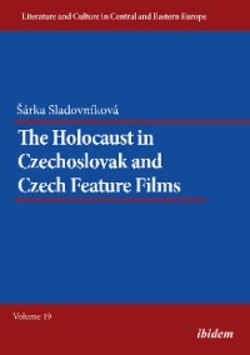Читать книгу The Holocaust in Czechoslovak and Czech Feature Films - Šárka Sladovníková - Страница 4
FOREWORD
ОглавлениеThis book is based on a study of the same name that was published in the expansive edited volume Cizí i blízcí: Židé, literatura, kultura v českých zemích ve 20. století [Close and Foreign: Jews, Literature and Culture in the Czech Lands in the Twentieth Century] in 2016. This edited volume, and implicitly the present book as well, draws from the theoretical concept of cultural memory, especially as explicated by Aleida Assmann. Memory in the form of collectively shared images of the past has spatial as well as social dimensions and its own history. Memory is related to the construction of a collective identity as well as to nationalism and the presentation of national and social stereotypes––these also create the stereotypes of Jews in literature. This idea also applies to the theme of this book, which deals with images of Nazi persecution of the Jews during World War II in Czechoslovak and Czech film.
A film is an artistic structure, one composed of various signs—visual, audio, and verbal. Unlike a literary work, a motion picture is always the result of teamwork and is more dependent on financing for production and distribution. Therefore, studying cinematic works, particularly ones about the Holocaust, cannot focus just on a close analysis of specific cinematic methods and images. This is particularly true for films that were made under the conditions present in Czechoslovakia after 1945. The Communist era (1948–1989) was marked by a varying degree of latent (and often even open) anti-Semitism, usually in the guise of “fighting against Zionism”. If in Western Europe, including West Germany, the Shoah became a serious, socially and politically relevant theme, then the same applies to Czechoslovakia and the other countries of the Eastern Bloc. Coming to grips with the Holocaust, and also with the complicity of some Czechs and Slovaks in the persecution of Jews, has also opened up other traumatic topics from the recent past, such as the forced transfer of the ethnic Germans from Czechoslovakia after the war or Stalinist totalitarianism.
Therefore, this book has two focuses. On the one hand, it charts the social and cultural framework in which the studied films were made, and how this framework changed. The fact alone that between 1948 and 1958 and again between 1970 and 1979 not a single feature film about the Shoah was made in Czechoslovakia tells us a great deal about the strict nature of state censorship. In contrast, the easing up of censorship, the decentralization of cultural life in the 1960s, and the elimination of censorship after 1989 resulted in boom of such films, some of which received worldwide fame (e.g., The Shop on Main Street by directors Ján Kadár and Elmar Klos), whereas others were remarkably experimental (e.g., Diamonds of the Night by Czech New Wave director Jan Němec). Particularly in the 1960s, there was a subversive element to Holocaust themes in Czechoslovak cinema and literature. Therefore, the author focuses great attention on the films made in this period.
The second focus of this book is on cinematic language. The author studies the composition of and narration in each film (e.g., the depiction of the war and the Shoah as a narratively closed versus a narratively open event), genre aspects of the films (e.g., the use of comedy and humor), convention and innovation in presenting motifs and characters (the division of gender roles, the character of the “good German”). She pays particular attention to the portrayal of stereotypes and countertypes in the films, where already well-known images, situations, and backdrops are repeated and which meet viewers’ expectations or, in contrast, which form countertypes and countersituations that go against the grain. Thus, the prewar life of Jewish families is often depicted as idyllic; such portrayals often involve religious rituals or objects (menorahs), even though most Czech Jews were integrated at the time and had a distant relationship with their Judaism. Persecution during the war is presented by means of the yellow Star of David and groups of Jews leaving for transports. These stereotypes have also changed over the course of the decades; for example, in recent years, images of brutal violence and sex have become much more common in Holocaust-themed films.
Many of the studied films are adaptations of literary works. In examining this media transformation and the differences between the poetics of literature and film, the author follows in the footsteps of other Czech scholars who have systematically dealt with this phenomenon: Marie Mravcová, Petr Mareš, Petr Málek, and Petr Bubeníček. Therefore, this book is also a contribution to adaptation studies, a rapidly developing field of scholarship.
Šárka Sladovníková is a young scholar and member of the team at the Centre for the Study of the Holocaust and Jewish Literature, which was founded in 2010 at the Faculty of Arts of Charles University in Prague. Since it was established, this center, the only of its kind in the Czech Republic, has worked with German and Polish scholars, particularly from the Forschungskreis Holocaustliteratur und -kultur im mittleren und östlichen Europa, which Reinhard Ibler founded and heads at Justus-Liebig-Universität in Gießen. As part of this collaboration we have held several international workshops and published seven joint books. This book, too, is the result of our cooperation.
March 2018
Jiří Holý
